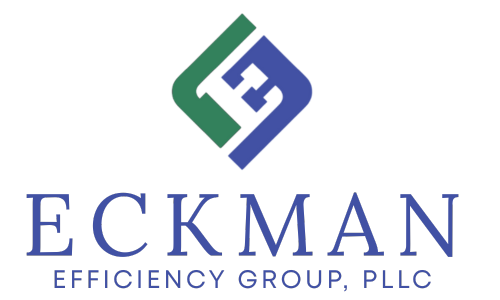The TEEG Take
ECKMAN EDGE
Your Financial Scorecard: What Every Business Leader Should Review Monthly
Running a business without a financial scorecard is like driving cross-country without a map — you might still get somewhere, but it won’t be efficient, and you may not end up where you hoped.
Your financial scorecard is your monthly check-in with the health of your business. It’s more than just numbers on a spreadsheet — it’s a structured, repeatable process that turns raw data into insights you can act on.
Here’s what I recommend every business leader review each month to stay in control, make informed decisions, and keep your team aligned.

Start with a Defined Monthly Close Process
The foundation of a reliable scorecard is a clear, consistent month-end close.
If your books aren’t closed the same way each month, your numbers won’t be comparable, and trends will be unreliable.
What this looks like:
- All revenue and expenses recorded through the last day of the month.
- Reconciliations completed for bank accounts, credit cards, loans, and key balance sheet items.
- Any adjusting entries posted before reports are finalized.
- A checklist so nothing slips through the cracks.
Pro Tip: Set a monthly close deadline — for example, the 10th business day of the month — so leadership knows when to expect final numbers.
Track & Analyze Key Performance Indicators (KPIs)
Once your close is complete, your scorecard should highlight metrics that actually move the needle for your business.
These will look different for a nonprofit versus a software company, but every business should track:
Core Financial KPIs:
- Net Income / Net Surplus (YTD) vs. budget
- Cash & Investments on Hand
- Current Ratio (short-term liquidity)
- Days Cash on Hand (operating runway)
- Accounts Receivable Days Outstanding
Business-Specific KPIs:
- Nonprofit: Program expense ratio, fundraising efficiency, grant utilization
- For-profit: Gross margin by product/service, project profitability, utilization rates
The key is not just tracking KPIs, but asking:
- Are we trending in the right direction?
- Are there red flags to address now, not later?
- Do these metrics match our strategic goals?
Deliver a Clear Monthly Financial Packet
Numbers alone don’t drive action — clarity does.
Your monthly financial packet should be designed so that a board member, department head, or investor can quickly see what’s going well, what’s off-track, and what decisions are needed.
A strong packet includes:
- Executive Summary: High-level overview of wins, challenges, and focus areas.
- Financial Statements: Income statement, balance sheet, and cash flow statement.
- KPI Dashboard: Visuals and trend graphs for quick scanning.
- Variance Analysis: Budget vs. actual, with explanations for significant differences.
- Forward Look: Updated forecast or next steps based on results.
Pro Tip: Keep it visually clean. A cluttered report can bury the insights your leadership team needs most.
The Monthly Review Meeting
Your scorecard is only valuable if you use it. Set a standing monthly review meeting with key decision-makers to:
- Review the packet together.
- Discuss variances and what’s driving them.
- Make adjustments to plans, budgets, or priorities.
This meeting isn’t about reading numbers aloud — it’s about turning numbers into strategy.
At The Eckman Efficiency Group, we work with leaders to build systems that save time, reduce frustration, and increase impact.
Why this matters
When you have a defined close process, clear KPIs, and a decision-ready packet, you move from reactive firefighting to proactive leadership.
You’ll spot trends early, make faster decisions, and keep everyone aligned toward the same goals.
At Eckman Efficiency Group, we help businesses build this exact system so leaders can spend less time wondering what’s going on and more time moving their organization forward.
From Overwhelmed to In Control
If your monthly financials feel overwhelming, inconsistent, or unclear, we can help you create a scorecard that works for your business. Let’s build a system that gives you clarity, confidence, and control.
